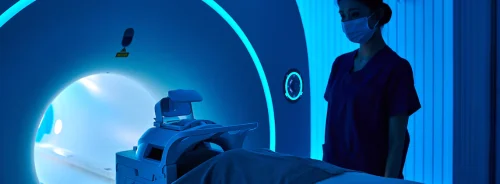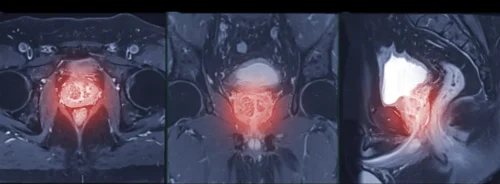HealthManagement, Volume 25 - Issue 3, 2025
Healthcare professionals are confronted with increasing administrative burdens due to inefficient EHR systems, which lead to burnout and diminished patient interaction. The Zero Click paradigm proposes integrating AI, automation and intuitive interfaces to minimise digital friction. The model aims to reclaim clinical time, reduce stress and improve care quality in an overstretched global workforce by streamlining tasks like data entry and scheduling.
Key Points
- EHR systems increase administrative tasks and reduce time spent with patients.
- Excessive clicking and data entry contribute to clinician stress and burnout.
- Zero Click Health uses AI and automation to streamline routine medical tasks.
- Smart interfaces and virtual assistants can reduce documentation workload.
- Reclaiming clinical time improves care quality and supports healthcare sustainability.
The Administrative Dilemma in Modern Healthcare
In 21st-century medicine, healthcare professionals face growing challenges beyond clinical complexity. One of the most significant burdens comes not from patients but from the systems meant to support their care, such as Electronic Health Records (EHRs). Though their promise once lay in optimising medical information, their real-world implementation has contributed heavily to administrative overload.
The history of EHRs traces back to the 1960s, with pioneering efforts from institutions like the Mayo Clinic, which aimed to create more effective ways to store, retrieve and manage patient data. During the 1970s, further advancements emerged, including significant work from the Regenstrief Institute in Indianapolis, led by Clement McDonald. This system addressed the complex database design issues and the challenge of linking healthcare organisations through digital infrastructure. By the 1980s, EHRs became more affordable and accessible. In the 1990s, efforts were made to standardise platforms and integrate internet capabilities, further transforming how data could be shared and used across clinical settings. Widespread adoption accelerated in the 2010s, particularly in countries like the United States, where government incentives helped establish EHRs as a cornerstone of clinical practice. This period marked a turning point, as the healthcare community increasingly recognised the potential of EHRs to improve quality, safety and efficiency. Yet, these benefits came with a cost that has become increasingly apparent to those who use the systems daily.
The Current Reality: Thousands of Clicks and Less Time for Patients
The implementation of EHRs, though well-intentioned, has led to unintended consequences. A study conducted by the Mayo Clinic revealed that a significant proportion of physicians—63%—believed EHRs had made their work less efficient. Furthermore, 44% expressed dissatisfaction with the systems. These sentiments are echoed across multiple healthcare settings, where digital documentation often dominates clinicians’ time.
Similarly, a systematic review has highlighted a troubling trend: usability issues and excessive interaction with EHRs are major contributors to stress and burnout among healthcare professionals. In particular, physicians are subject to a constant demand for documentation in emergency departments. One study found that during a 10-hour shift, an emergency physician may perform as many as 4,000 clicks. In this same timeframe, nearly half of their working hours, about 44%, are spent on data entry, while only 28% is allocated to direct patient interaction. This imbalance not only hampers efficiency but also exacerbates professional burnout.
Proposals for a Click-Free Healthcare Model
The advent of generative artificial intelligence has facilitated the simplification of information retrieval and generation across various sectors. One of the more disruptive innovations has been the emergence of the “zero-click search” experience. This refers to a model in which users receive relevant information immediately without opening additional links or navigating through layers of content. Originally a feature of search engines like Google, zero-click search has begun influencing how users engage with information across digital environments.
According to a recent survey conducted by Bain & Company, around 80% of consumers trust zero-click results for at least 40% of their searches. This shift has already had measurable effects, with organic web traffic reportedly declining by 15–25% due to this trend. In healthcare, the “Zero Click Health” concept draws inspiration from this model, proposing a future in which clinical data and support tools are delivered seamlessly to providers without demanding time-consuming interaction.
Several strategies can support this transition:
- Smart Automation: Deploy systems capable of automatically collecting and processing data, reducing the need for manual input. This could simplify the creation of discharge summaries, emergency department reports or surgical notes. Tools like Nabla or Abridge are examples of providers working in this line.
- Optimised User Interface: Design EHR systems with more intuitive, user-centred interfaces. For example, Llamalitica enables conversational interaction with the medical record, allowing clinicians to request past results—potentially through speech—from the patient’s file.
- AI Integration: Use artificial intelligence to predict and perform routine tasks like prescription renewals or appointment scheduling. Microsoft’s Nuance DAX-Copilot, Suki AI or Babylon Health allow these options.
- Administrative Support: Assign virtual assistants to handle administrative duties, allowing healthcare professionals to devote more time to patient care. Examples include chatbots, integrated messaging and other digital tools. Olive AI or Sensely as many others are working in this way.
Reducing Friction, Restoring Focus
The ambition behind Zero Click Health is not simply to eliminate clicks but to reduce friction across all points of medical interaction. By applying emerging technologies in meaningful, user-centred ways, the healthcare sector can alleviate administrative overload and restore balance to clinical work. The model advocates for a healthcare environment where tools adapt to people, not vice versa.
The promise of such a shift is profound for physicians and care teams. Reclaiming time from bureaucratic systems enables more human-centred care, fostering stronger relationships between caregivers and patients. It also contributes directly to professional well-being. In an era where clinician burnout is reaching critical levels, such improvements are more than technical—they are necessary safeguards for the profession's future.
The global context only sharpens this urgency. According to the World Health Organisation, there is a shortage of 10 million healthcare professionals. Rather than focusing exclusively on producing more clinicians, ensuring that existing professionals can use their time more effectively may be more effective. In other words, it is time to move from the paradigm of “we need more doctors” to “we need more useful doctor time.” The Zero Click Health approach could deliver up to 30% more effective medical time, directly addressing this imbalance and unlocking new efficiencies in care delivery.
Conclusion: Enabling Time for What Matters Most
Zero Click Health represents a vision of healthcare where technology serves as a silent partner—efficient, intelligent and unobtrusive. It offers an antidote to the digital exhaustion many clinicians experience and proposes a path toward more intelligent, more compassionate systems.
By adopting this approach, healthcare systems can reduce burnout and enhance the quality of care. The technology to make this possible already exists; it is now up to policymakers and healthcare leaders to act.
Conflict of Interest
The author is cofounder and partner at Llamalitica (llamalitica.com), a start-up dedicated to Ambient AI and mentioned in the piece.
References:
Bain & Company (2025). Goodbye clicks, hello AI: Zero-click search redefines marketing (accessed: 29 May 2025). Available from bain.com/insights/goodbye-clicks-hello-ai-zero-click-search-redefines-marketing/
George S, Duran N, & Norris K (2020) Evaluating the prevalence of burnout among health care professionals related to electronic health record use: Systematic review and meta-analysis. JMIR Medical Informatics, 8(6):e15181.
Hill RG, Sears LM, & Melanson SW (2013) 4000 clicks: a productivity analysis of electronic medical records in a community hospital emergency department. Annals of Emergency Medicine, 62(3):248–256 (accessed: 29 May 2025). Available from pubmed.ncbi.nlm.nih.gov/24060331/
Melnick ER, Dyrbye LN, Sinsky CA et al. (2020) Association of electronic health record design and use factors with clinician stress and burnout. JAMA Network Open, 3(6):e206686.
Net Health (n.d.) The history of electronic health records (EHRs) (accessed: 29 May 2025). Available from nethealth.com/blog/the-history-of-electronic-health-records-ehrs/
Oaklander M (2016). Doctors are burned out by busywork: Study. Time Magazine, June 26 (accessed: 29 May 2025). Available from time.com/4383979/doctor-burnout-electronic-health-records/






